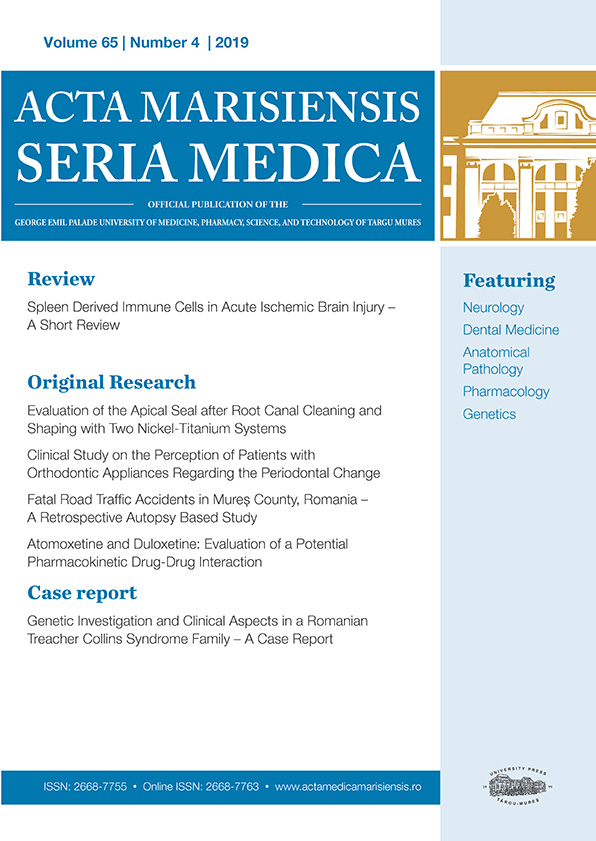The outcome in critically ill patients admitted for thoracic trauma – a single center analysis over one year
Abstract
Abstract
Objective: The main objective of the current study was to examine the outcome of critically ill patients in relation to clinical and thoracic injuries. The secondary objectives were to assess the role of CT in the evaluation of the diaphragm and to provide an analysis of prognostic abilities with respect to diaphragm changes.
Methods: This single-center retrospective observational cohort study was conducted in the ICU of Târgu Mureș County Emergency Clinical Hospital, Romania. This study identified 52 critically ill blunted or penetrating chest trauma patients admitted to the ICU from 01 January 2021 to 31 December 2021. CT scan was used to identify thorax injuries and diaphragm thickness. The outcome of all patients was analyzed.
Results: Most of the patients experienced traffic accidents (44.23%) or falls (26.93%). The predominant characteristics associated with chest trauma were rib fractures (92.30%), lung contusions (63.50%), and pneumothorax (53.80%). The most common injury seen in the study was rib fractures, accounting for 92.30% of cases. This was followed by lung contusions, which were present in 63.50% of patients, and pneumothorax, which occurred in 53.80% of cases. It was examined ROC AUC for thickness of the right and the left diaphragm and severity scores. When assessing the thickness of the diaphragm in deceased and survivors, no statistically significant differences were found.
Conclusion: Although no significant differences were found regarding the prognosis between the survivors and the deceased, diaphragm thickness might potentially serve as a predictor for the severity of the injury.
Copyright (c) 2023 Oana Elena Branea, Kiss Konrád Ottó, Pui Mihai, Cehan Vlad Dimitrie, Frandes Oana, Vlad Anca Gabriela, Branea Ioan Alexandru, Fulop Andrei Cristian, Chis Monica, Lazar Alexandra Elena

This work is licensed under a Creative Commons Attribution 4.0 International License.









